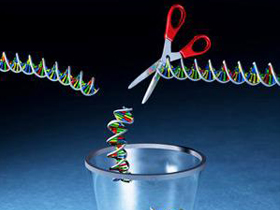Until several years ago, this term was given to collections of DNA whose functions were unknown to scientists. For the time being, they referred to these long sequences that they were unable to describe as genes as “junk DNA.” They also suggested that these long sections of DNA, which served no purpose according to their understanding at the time, were evidence of evolution.
According to this thesis, junk DNA was composed of segments that had accumulated during the evolutionary process, but which now had no use.
This claim, based on no scientific grounds, consisted solely of unfounded speculation. The reason why it was so easily able to find a place in the literature was that in those days, very little was known about DNA. The functions of those parts of DNA known as “junk” had not yet been brought discovered.
However, with the Human Genome Project and other similar genetic research, it emerged that genes were constantly interacting with one another during the protein-production process. (See Genome Project, the.) During the course of this production, It was realized that no one gene works independently of other DNA segments. The point we are at today shows that while one gene works, especially during the initial protein codification phase, parts of the DNA that do not constitute genes help regulate it. For that reason, any scientist interested in genetics or who closely monitors developments no longer attaches any worth to the concept of junk DNA.
The fact that these DNA segments are in a constant state of activity has actually been known for a considerable time, whether evolutionists like it or not. Molecular biologists from the Harvard University Medical Faculty and physicists from Boston University shed light on this matter in a report titled “Does nonsense DNA speak its own dialect?” published in Science magazine in 1994.233 As a result of their research into 37 DNA strands containing 50,000 base pairs, taken from various living things, they reported that the “empty” DNA that makes up 90% of human DNA is actually written in a special language.
In fact, this concept is simply the latest example of the “vestigial organs” that evolutionists have been proposing since the beginning of the 20th century. (See Vestigial Organs thesis, the.) At that time, many evolutionists suggested that many organs whose functions had not yet been discovered (for example, the appendix and the coccyx) were useless, vestigial organs and left behind in the course of evolution. Later medical research, however, revealed that these organs imagined to be useless actually performed important functions. The appendix, for instance, was shown to be part of the body’s immune system, and the coccyx to be an attachment point for important muscles.
Today the same thing applies to those parts of the chromosome that some would like to consider vestigial DNA. Yet as our biological knowledge increases, so this claim is increasingly unfounded.
233 “Does nonsense DNA speak its own dialect?,” Science News, Vol. 164, December 24, 1994.
234 Service, R.F., Vogel, G, Science, February 16, 2001.
235 S. R. Scadding, “Do ‘Vestigial Organs’ Provide Evidence for Evolution?” Evolutionary Theory, Vol. 5, May 1981, p. 173.


